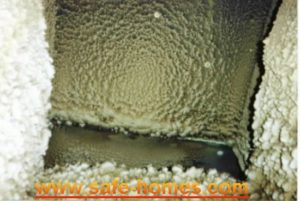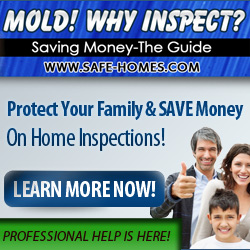Mold Investigation, Asthma and Allergy Investigations
Microbial Sampling can be expensive. The results are also difficult to interpret partially because we have very limited information about what level of mold exposure is associated with health effects. In some cases, knowing the type of mold that is present can be helpful. Overall, the best practice regardless of the type or amount of mold is to promptly clean up any visible mold growth in your home and to correct the water problem that caused it. However, if you are having continuous health issues that do not seem to go away, or you constantly smell a musty or toxic odor, then the only way to peace of mind is an environmental test by a certified inspector.
What Can I Expect In A Mold Investigation?
Inspection Area:
1. Living Area Only
2. Attics with visible moisture damage on ceiling of Living Area are referred to a Licensed Roofing Contractor or a General Contractor for further investigation. General Contractor will communicate if they see visible damage on insulation and what areas. This damaged area will require an invasive investigation by a licensed Mold Remediator.
3. Visible interior damage such as water stains on baseboards, cracked baseboards at caulked seams are referred to a licensed Mold Remediator for further investigation. If source is apparent, such as exterior cracks or holes in structure, they are referred to a licensed Painting Contractor for further evaluation also.
4. Areas behind drywall or plaster are excluded from the Mold Inspection unless suitable access is given the Inspector by the homeowner in writing.
Un-Safe Conditions in Mold Investigation Areas:
1. Judged by the Inspector to be a significant risk of personal injury during the normal, day-to-day use. An example of this is an attic or crawlspace.
2. It is not readily accessible such as an attic without drop-down access stairs.
2. Attics that require special height requirement ladders not normally used in the day to day inspection process by Safe-Homes.
3. Attics deemed too low to inspect properly by the Inspector. An example would be a flat roof.
4. An area required by law to be inspected by certain licensed entities by State Regulation such as in the State of Florida. An example would be a Home Inspection of an attic area for missing insulation. Another example would be a Roof Inspection of underside of a roof for a leak.
5. The risk may be due to damage, deterioration, improper installation or a change in accepted residential construction standards. An example of this would be a deteriorated wooden floor in the house.





Leave a Reply
You must be logged in to post a comment.